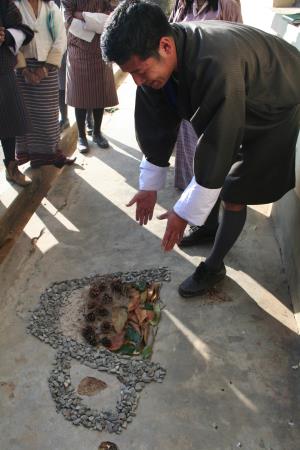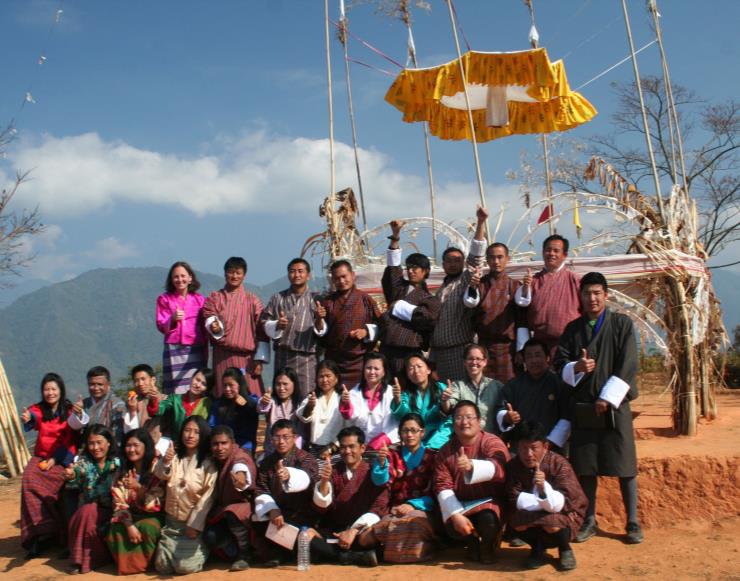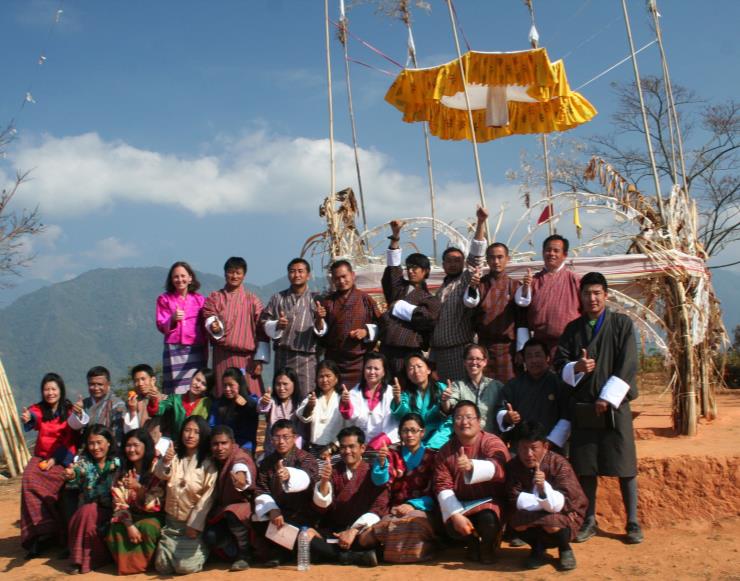 Our 10-day workshop ended on Monday, January 20. The final three days of the workshop were geared towards the teacher participants transferring their learning back to their own schools, classrooms, and communities. The teachers also participated in a series of leadership initiatives as they pondered how to lead other teachers in their school & district in place-based learning. On these final days the group was performing at a high level, supportive of each other, and eager to share what they learned about place-based education.The focus of day 8 of the workshop was on action planning – setting SMART (specific, measurable, attainable, relevant, and timely) goals for implementing place-based education in their schools and communities. Working individually and in small groups teachers came up with goals ranging from implementing place-based lessons twice per week in their classrooms to conducting a training for the other teachers at their school to compiling a guidebook of place-based lessons and activities from teachers to be used as a resource at the school. We also spent time on day 8 developing 11 Principles of Place-Based Learning for Bhutan (see the end of the blog for the list). On day 9 of the workshop Kate and I helped the teachers prepare for conducting a School-Based In-Service Program (a workshop for the other teachers & principals) in each of their schools. Part of their requirement of attending this place-based education workshop is to conduct a similar workshop back at their own schools. We discussed best practices in teacher professional development and backwards design as tools for making their own workshops effective. Our day 9 concluded with Andy Goldsworthy-style nature-art projects. In small groups, teachers created sculptures from objects found in nature to represent their learning over the ten days. One of the sculptures was a cup filled with different metaphorical components of learning that the teachers had experienced over the 10 days of the workshop.Finally, day 10 brought the conclusion of the workshop. We spent time in a series of reflection and concluding activities including a short walk to a temple on a high point near the school grounds. Along our walk, Kate modeled a few new place-based activities for the teachers, and at the point we conducted our closing thank you circle. The teachers had all enjoyed our Kate and I used a “thumb-o-meter” as a check-in tool for how they were feeling about a topic that we discussed. So, our final group picture included all of us giving a “thumbs up” to the workshop.After 10 days spent together, I was sad to see our teachers go. We developed a small, close-knit community of passionate educators over the 10 days. I am inspired knowing that they will be enriching their own curricula with place-based ideas. Cheers to these 24 teachers on their work yet to come!
Our 10-day workshop ended on Monday, January 20. The final three days of the workshop were geared towards the teacher participants transferring their learning back to their own schools, classrooms, and communities. The teachers also participated in a series of leadership initiatives as they pondered how to lead other teachers in their school & district in place-based learning. On these final days the group was performing at a high level, supportive of each other, and eager to share what they learned about place-based education.The focus of day 8 of the workshop was on action planning – setting SMART (specific, measurable, attainable, relevant, and timely) goals for implementing place-based education in their schools and communities. Working individually and in small groups teachers came up with goals ranging from implementing place-based lessons twice per week in their classrooms to conducting a training for the other teachers at their school to compiling a guidebook of place-based lessons and activities from teachers to be used as a resource at the school. We also spent time on day 8 developing 11 Principles of Place-Based Learning for Bhutan (see the end of the blog for the list). On day 9 of the workshop Kate and I helped the teachers prepare for conducting a School-Based In-Service Program (a workshop for the other teachers & principals) in each of their schools. Part of their requirement of attending this place-based education workshop is to conduct a similar workshop back at their own schools. We discussed best practices in teacher professional development and backwards design as tools for making their own workshops effective. Our day 9 concluded with Andy Goldsworthy-style nature-art projects. In small groups, teachers created sculptures from objects found in nature to represent their learning over the ten days. One of the sculptures was a cup filled with different metaphorical components of learning that the teachers had experienced over the 10 days of the workshop.Finally, day 10 brought the conclusion of the workshop. We spent time in a series of reflection and concluding activities including a short walk to a temple on a high point near the school grounds. Along our walk, Kate modeled a few new place-based activities for the teachers, and at the point we conducted our closing thank you circle. The teachers had all enjoyed our Kate and I used a “thumb-o-meter” as a check-in tool for how they were feeling about a topic that we discussed. So, our final group picture included all of us giving a “thumbs up” to the workshop.After 10 days spent together, I was sad to see our teachers go. We developed a small, close-knit community of passionate educators over the 10 days. I am inspired knowing that they will be enriching their own curricula with place-based ideas. Cheers to these 24 teachers on their work yet to come!
Kate and I celebrated the conclusion of the workshop with two of our hosts – Mr. Wangchuk and Mr. Bhoj Raj Rai – at a small tea shop in Damphu called Hasty Tasty. The tea was our favorite we had in Bhutan – with a little bit of ginger and a little bit of cardamom in our sweet milk tea.
 Place-based Education PrinciplesJanuary 2014 – Damphu Higher Secondary School, Tsriang, Bhutan1. Learning engages students in inquiry, investigating, and problem solving.2. Learning can take place everywhere.3. Learning is student-centered with scaffolding. 4. Learning is objective-oriented so that students take responsibility for their own learning. 5. Learning is oriented so that students feel positive and in control.6. Learning is personally relevant to the learner involving real-world experiences. 7. Learning is structured to promote deep understanding of content.8. Learning is grounded in and supports the development of a love for one’s place.9. Learning is focused on local issues.10. Learning includes strong and varied partnerships with local agencies, businesses, and government.11. Learning is interdisciplinary.
Place-based Education PrinciplesJanuary 2014 – Damphu Higher Secondary School, Tsriang, Bhutan1. Learning engages students in inquiry, investigating, and problem solving.2. Learning can take place everywhere.3. Learning is student-centered with scaffolding. 4. Learning is objective-oriented so that students take responsibility for their own learning. 5. Learning is oriented so that students feel positive and in control.6. Learning is personally relevant to the learner involving real-world experiences. 7. Learning is structured to promote deep understanding of content.8. Learning is grounded in and supports the development of a love for one’s place.9. Learning is focused on local issues.10. Learning includes strong and varied partnerships with local agencies, businesses, and government.11. Learning is interdisciplinary.


